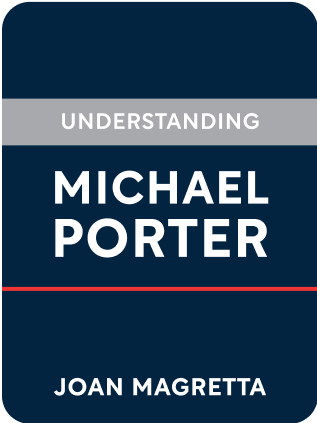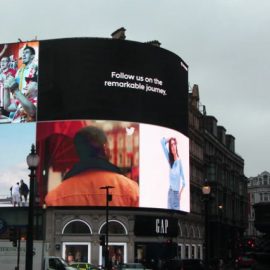

This article is an excerpt from the Shortform summary of "Understanding Michael Porter" by Joan Magretta. Shortform has the world's best summaries of books you should be reading.
Like this article? Sign up for a free trial here .
Are you looking for an IKEA case study according to Michael Porter’s Five Forces?
Porter’s IKEA case study shows one company’s success in fitting together business activities, business strategy, and operations. His analysis shows how the activities connect to create a uniquely competitive business.
IKEA’s Fit Between Activities
Good strategies depend on the connection among many things. Fit means the value or cost of one activity is affected by the way other activities are performed – in other words, “synergy.” If the activities fit together, they each meaningfully contribute to the company’s increased value or lower cost, and they work strongly together. The IKEA case analysis below is one example of fit between different activities.
This is a clear departure from the (mistaken) idea of the one core competence. If strategy truly is based on one core competence, then it becomes relatively easy to replicate. More often, industries compete fiercely to control the one key “resource” – distribution channels, product portfolios – thus driving up cost. In reality, strong strategies are built on many unique activities that fit together to deliver the unique value proposition. Later, you’ll see how fit works well in the IKEA case study, despite certain trade-offs.
Fit arises in 3 ways. Keep this in mind when you read the IKEA case analysis:
- Basic consistency: each activity aligns with the company’s value proposition and contributes incrementally.
- Example: many of Southwest’s activities are directionally pointed toward lowering cost and increasing convenience.
- When activities are inconsistent, they cancel each other out.
- Activities complement or reinforce each other: real synergy.
- Netflix’s large catalogue gives more chances to collect data points to make better recommendations.
- Substitution: Performing one activity makes it possible to eliminate another – within the company, or for customers/suppliers in the value system.
- IKEA’s room displays substitute for sales associates, thus lowering cost.
- Dell will preload software onto PCs, substituting for the customer’s IT department.
Fit discourages rivals in a few ways:
- With a large range of activities, it becomes unclear which of the company’s activities are most valuable to replicate.
- For a rival to achieve the same competitive advantage, they would need to replicate all the activities, which becomes exponentially harder with each activity.
- As a simplistic example, say there are 5 activities that give a company a competitive advantage. If the chance of replicating one activity is 90%, then the chance of replicating all of them is 0.9^5, or 62%.
- An activity that fits one value chain can punish a different value chain, if it lacks synergies with the other activities or contradicts them.
- Activities with fit make it easier to see where the weak link in the chain is (think about this in the IKEA case analysis later).
The IKEA Case Study
Let’s examine a masterpiece of strategy in IKEA using the IKEA case study analysis. Their mission is to deliver stylish furniture at low prices. Their activities show clear trade-offs and strong fit:
- Furniture is disassembled and requires self-assembly, reducing assembly cost and allowing storage in compact boxes.
- Assembling furniture yourself also seems to increase your enjoyment of it, maybe because of endowment effect.
- Compact boxes reduce freight shipping costs from the manufacturer.
- Compact boxes allow buyers to more easily transport furniture to their homes with little assistance.
- This means time from buying to having furniture in your house is much faster than shipped furniture.
- IKEA stores are huge warehouses in large suburban locations with highway access. With large parking lots and loading zones, they allow customers to self-service and deliver their own furniture.
- IKEA showrooms have minimal staff, with the entire inventory laid out for buyers to peruse.
- IKEA cafeterias are self-service and customers are encouraged to bus their own trays.
- IKEA designs its own products, allowing trade-offs in styling and cost.
- Furniture has few customization options, allowing production in bulk and bargaining at scale.
- A narrower catalogue also allows IKEA to keep its warehouses fully stocked, instead of requiring shipping.
Many of these activities fit together and reinforce each other to provide low-priced furniture. The furniture’s self-assembled design reduces manufacturing costs, storage costs, shipping costs from manufacturer, and shipping costs to customers. In turn, IKEA’s locations make the furniture’s self-assembled design even more effective.
Note how each activity is distinctly a trade-off: you either have furniture disassembled or not. You either have salespeople on the showroom floor or not. This is one of the aspects covered in the IKEA case study analysis.
Many traditional furniture retailers practice the inverse of IKEA’s value chain. If they tried to adopt one of IKEA’s activities, they’d find it less compatible with their own value chain, and so they’d gain very little of IKEA’s competitive advantage.
Note too that, in making these tradeoffs, IKEA is deliberately alienating customer groups – those who want furniture ordered seamlessly to their homes, who want nice salespeople to guide them through options, who want unique and fancifully designed furniture. The IKEA case study analysis shows how trade-offs can sometimes have big strategic payoffs.
Activity System Map
To visualize the strength of fit between activities, place the activities on a map.
- Start by placing the key components of the value proposition.
- Make a list of the activities most responsible for competitive advantage
- Add each activity to the map. Draw lines wherever there is fit: when the activity contributes to value proposition, or when two activities affect each other
Here’s an example for IKEA:
A densely interconnected activity map is a good sign. A sparsely connected map shows weak strategy.
The activity map isn’t useful just for description of your current strategy. It can also be used for ideation for new strategies:
- Can you improve fit between activities?
- Can you find ways for an activity to substitute for another?
- Can you find new activities or enhancements to what you already do?
- Are there new products or features you can offer because of your activity map, that rivals will find difficult to emulate?
Porter’s IKEA case study is an example of a competitive business in a particular area of an industry. Porter’s IKEA case study shows business activities and strategy intersecting successfully.

———End of Preview———
Like what you just read? Read the rest of the world's best summary of Joan Magretta's "Understanding Michael Porter" at Shortform .
Here's what you'll find in our full Understanding Michael Porter summary :
- How Porter's famous Five Forces help you analyze every industry
- How IKEA, Southwest Airlines, and Zara have ironclad, defensible strategies
- Why the best companies reject opportunities to focus on what they know






